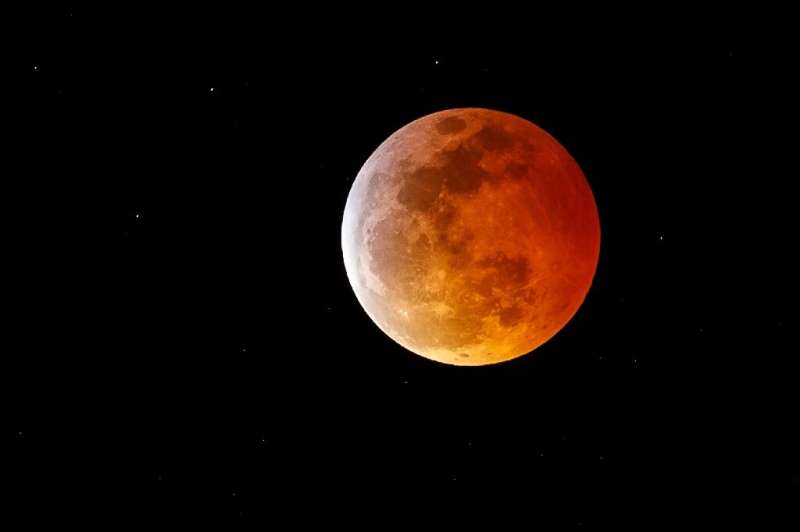Unlike a solar eclipse, the phenomenon will be safely visible to the naked eye.
This eclipse will be different because it happens during a "super moon", when the moon passes a mere 360,000 kilometres (225,000 miles) from Earth.
At that point, it can appear 30 percent brighter and 14 percent larger than at its farthest point—a difference of around 50,000 kilometres (30,000 miles).
"Interest has been high," said Andrew Jacobs curator of astronomy at Sydney Observatory, who is hosting a Covid-safe viewing event with telescopes and expert speakers. "I'm expecting a clear night."
The event will also be live-streamed, and 20,000 users have already registered.
For those wanting to see the event in person, Jacobs predicted the best view will be in "Australia, New Zealand, and large parts of the Pacific. New Guinea also gets a good view."
"The Americas see it in the early morning, but they don't necessarily see all parts of the eclipse," he said.
"Europe and Africa and the Middle East are missing out completely, on this particular one."
According to NASA's Bill Cooke, "folks in Hawaii and the Aleutian Islands will get to see the entirety of this eclipse –- it will be quite a show for them."
Lunar eclipses have not always been so warmly anticipated throughout history. In many cultures lunar and solar eclipses were seen as harbingers of doom.
The Inca believed a lunar eclipse occurred when a jaguar had eaten the moon. Some Aboriginal Australian groups believed it signalled someone on a journey had been hurt or killed.
In "King Lear" William Shakespeare warned, "eclipses in the sun and moon portend no good to us".
But so far no apocalyptic consequences have been recorded from these celestial shows and, assuming all goes well on Wednesday, the next Super Blood Moon is expected to take place in 2033.
Explore further
© 2021 AFP



